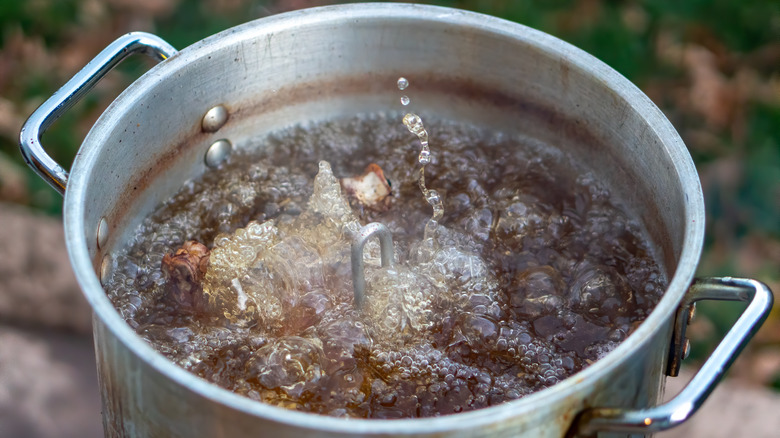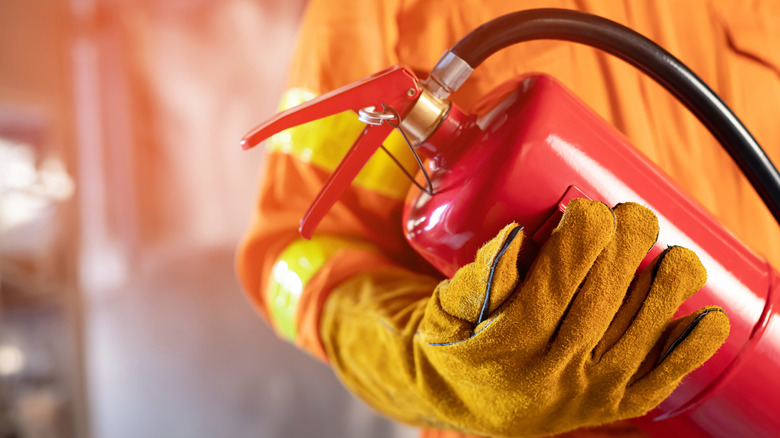The Easy Way To Avoid A Deep Fried Turkey Explosion This Thanksgiving
Cooking a Thanksgiving turkey in a vat of hot oil seems decidedly less traditional than roasting it in an oven, but turkey fryers have been around for longer than you'd think. Executed by the more fearless souls among us, deep-fried turkey is said to owe its popularity to the late Southern chef Justin Wilson, who was known for his Cajun-inspired cooking. According to Vogue, Wilson used his platform to shed light on the process, which he witnessed in Creole kitchens in the 1930s. What he saw was a turkey fastened to a "hanger-type apparatus" that was dunked for three or four minutes in a large pot of 400-degree Fahrenheit oil heated with propane gas, until dangerously crispy.
Speaking of danger, folks at home who have employed the method for Thanksgiving have been met with some unsavory results. In 2018, East Idaho News teamed up with the Idaho Falls Fire Department to demonstrate how not to deep-fry a turkey. Namely, they put the pot on an unleveled surface that could topple over, and they use a frozen turkey whose ice crystals could cause excess splattering. When they light up the propane tank and dunk the bird, a massive fireball shoots from the pot. Needless to say, you don't want that fireball near your house, the trees in your backyard, or your dinner guests. How do you avoid such a disaster?
Go easy on the oil
There's bound to be some messiness involved in deep-frying a turkey, but Oregon Live offers a few tips for safe cooking, courtesy of the Clackamas Fire Department. We can't stress enough the importance of thawing your turkey. "Moisture causes hot oil to erupt," says the CFD.
Next, don't overdo it on the oil. The turkey will increase the volume of the pot by more than you think, causing the oil to spill over and cause a big mess and a fire hazard. The CFD's last tip seems obvious, but it's still worth mentioning: Be sure to fry your turkey outside of your home and far away from other wooden structures, on a "non-combustible surface" like gravel.
National Park Service seconds this advice and offers a simple way to use the right amount of oil. First, place your thawed turkey in the fryer and add enough water to cover the bird by half. Remove the turkey, mark the water level, dump the water, dry the pot thoroughly, and pour the oil into the marked spot.
You'll also want to have a fire extinguisher ready and keep an eye on the weather. If there's precipitation in the air, it can splatter against the ripping-hot oil and cause a similar problem as a frozen turkey. Finally, the National Park Service says to raise and lower the turkey slowly from its pot to avoid splatter and to stand "upwind" of the propane tank.

